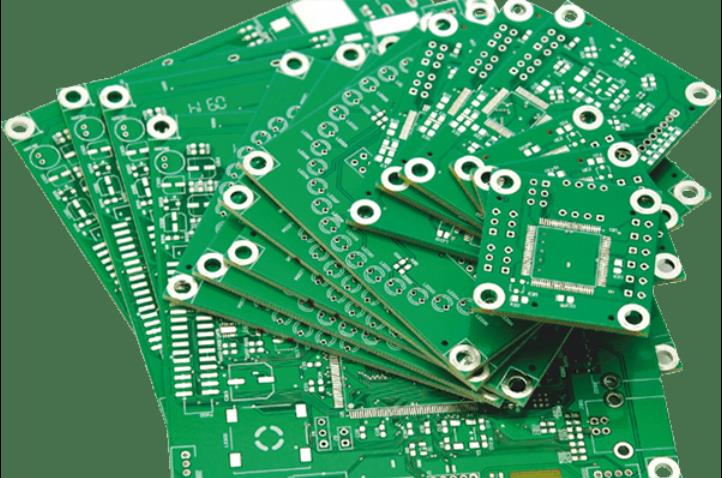The manufacturing process of PCB board has developed rapidly. Different types of PCB boards with different requirements adopt different processes, but the basic process flow is the same. Generally, it has to go through the process of film plate making, pattern transfer, chemical etching, via and copper foil processing, flux, and solder mask processing. The PCB board manufacturing process can be roughly divided into the following five steps:

1. PCB board production step film plate making
1) Draw a base map
Most of the base maps are drawn by the designer, and in order to ensure the quality of the printed board processing, the PCB board manufacturer must check and modify these base maps. If they do not meet the requirements, they need to be redrawn.
2) Photoengraving
Use the drawn base map to make a photo plate, and the size of the layout should be consistent with the size of the PCB board. The process of PCB board photography is roughly the same as that of ordinary photography, which can be divided into film cutting-exposure-development-fixing-washing-drying-revision. Before performing the photography, you should check the correctness of the base map, especially the base map that has been placed for a long time. Before exposure, the focal length should be adjusted, and the double-sided photo plate should keep the same focal length as the two photos on the front and back; the photo plate needs to be revised after drying.
2. The second step of PCB board production graphics transfer
Transfer the printed circuit pattern of the PCB board on the phase plate to the copper clad board, which is called PCB board pattern transfer. There are many methods for PCB pattern transfer, commonly used are the screen printing method and photochemical method.
1) Screen printing missing
The screen printing is similar to the mimeograph, which is to attach a layer of paint or glue film to the screen, and then make the printed circuit diagram into a hollow figure according to the technical requirements. Performing screen printing is an ancient printing process with simple operation and low cost; it can be achieved by manual, semi-automatic, or automatic screen printing machines. The steps for manual screen printing are:
a. Position the copper-clad laminate on the bottom plate, and place the printed material in the frame of the fixed silk screen.
b. Scrape the printing material with a rubber plate, so that the screen is in direct contact with the copper-clad laminate, and the composition pattern is formed on the copper-clad laminate.
c. Then drying and revision.
3. The third optical method of PCB board production
1) Direct photosensitive method
The technological process is as follows: surface treatment of the copper-clad laminate, coating of photosensitive adhesive, exposure, development, film fixing, and plate revision. Revision is the work that must be done before etching, which can repair burrs, broken lines, sand holes, etc.
2) Photosensitive dry film method
The process is the same as the direct photosensitive method, but instead of using a photosensitive adhesive, a film is used as the photosensitive material. This film is composed of three layers of polyester film, photosensitive adhesive film, and polyethylene film. The photosensitive adhesive film is sandwiched in the middle. When using, the outer protective film is removed, and the photosensitive adhesive film is pasted on the copper-clad plate using a laminating machine.
3) Chemical etching
It uses chemical methods to remove the unnecessary copper foil on the board, leaving the pads, printed wires, and symbols that form the pattern. Commonly used etching solutions are acid copper chloride, alkaline copper chloride, ferric chloride, etc.
4. The fourth step of PCB board production is through-hole and copper foil treatment
1) Metallized holes
The metalized hole is to deposit copper on the wall of the hole that runs through the wires or pads on both sides so that the original non-metallic hole wall is metalized, also known as sinking copper. In double-sided and multi-layer PCB boards, this is an essential process. In actual production, a series of processes such as drilling, degreasing, roughening, immersion cleaning solution, hole wall activation, chemical copper deposition, electroplating, and thickening can be completed. The quality of the metalized holes is crucial to the double-sided PCB board, so it must be checked, and the metal layer is required to be uniform and complete, and the connection with the copper foil to be reliable. In the surface mount high-density board, this metallization hole adopts the blind hole method (the copper sinking fills the entire hole) to reduce the area occupied by the via hole and increase the density.
2) Metal coating
In order to improve the conductivity, solderability, wear resistance, and decorative properties of the printed circuit of the PCB board, prolong the service life of the PCB board and improve the electrical reliability, the metal coating is often performed on the copper foil of the PCB board. Commonly used coating materials are gold, silver, and lead-tin alloys.
5. The fifth step of PCB board production is soldering and soldering mask treatment
After the surface of the PCB board is coated with metal, flux or solder mask treatment can be performed according to different needs. Applying flux can improve solderability; on high-density lead-tin alloy boards, in order to protect the board surface and ensure the accuracy of soldering, solder resist can be added to the PCB board surface to expose the pads, and other parts are under the solder mask. Solder resist coatings are divided into two types: heat-curing and light-curing, and the color is dark green or light green.